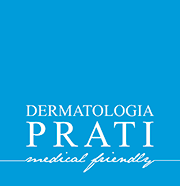How to treat nail psoriasis: from symptoms to treatment
There are several nail diseases. Therefore, before we even understand how to treat nail psoriasis, let’s get a good understanding of what this disease consists of.
Nail psoriasis:
It is an inflammatory disease. It usually manifests as a chronic, relapsing skin inflammation. It is usual to think of psoriasis as a condition involving limited skin areas such as knees, elbows, scalp, or sacral region; in truth, it can also appear on a fingernail or involve those on hands and feet simultaneously. This chronic disease affects 3% of the Italian population, and nail involvement ranges from 17% to 79% of cases.
Toenail or fingernail psoriasis can occur at any age, but it tends to occur between the ages of 20 and 30; it is rarer in children. Nail psoriasis alters the structure and appearance of the extremities, triggering a truly noticeable and therefore disabling unsightly problem in the daily life of those affected. But it does not boil down to this: it is by no means to be underestimated and could be the alarm bell of a more serious disease. For example, it could be a symptom of psoriatic arthritis: a joint, inflammatory, and autoimmune disease that affects 15 percent of people with psoriasis.
Psoriasis nail foot or hand: causes and symptoms
As with psoriasis in general, the causes responsible for nail psoriasis have not yet been pinpointed exactly; however, a polyfactorial origin is certain. In the presence of nail psoriasis there is definitely the implication of genetic, immune, and environmental factors (in association with weak nails). Among them, conditions that can stimulate the development of the disease include:
- stress
- physical trauma
- infections such as streptococcus
- medication
- obesity
- seasonal changes
- xerosis
- spirits
One cause of the pathological manifestation in the nails could be the same intake of the anti-psoriasis immunosuppressive drugs. In fact, weakening of the immune system could promote fungal proliferation and subsequent local psoriasis.
The presence of the disease makes the keratin layer more fragile and permeable to external agents (first and foremost bacteria and dirt) that could in turn be the cause of further damage to the body. Here are the most common symptoms that should immediately alarm us:
- thickening of the nail plate
- Onycholysis (disconnection of the keratin layer)
- mycosis
- Point depressions (also called pitting)
- Transverse grooves on the nails (also called Beau’s lines)
- yellowish or pinkish spots (Grotton’s spots)
The evolution of the disease alternates between relapses and remissions, going to irreparably compromise the appearance of the nails.
Nail psoriasis how to treat it
It is a disease characterized by recurrence, so even if treated, the risk of reoccurrence is not completely eradicated. However, one should always seek expert advice to intervene immediately and prevent the condition from becoming chronic. Depending on the intensity of the problem, the doctor will prescribe medicines of different kinds. Through a nail tissue test, the dermatologist will be able to understand whether it is psoriasis and what stage of the disease the patient is at. The so-called NAPSI index allows the physician to assign a numerical value to the condition, depending on the severity of the symptoms.
- Keratolytic drugs. If psoriasis is not at an advanced stage, then topical therapy based on active ingredients such as urea , salicylic acid, retinoids, corticosteroids, vitamin D and derivatives will also be effective. These topical medicines have a softening and exfoliating action on the thickened and hardened nail.
- Immunosuppressant or protein-derived drugs. In the face of more aggressive forms, however, these other categories of drugs, to be taken orally, will be used. The most commonly prescribed immunosuppressants include methotrexate and cyclosporine . As for innovative biologic drugs, however, there areinfliximab, adalimumab, and etanercept.
Prevention
Before treatment, it is necessary to prevent the onset of the disease. A healthy lifestyle and proper nutrition are among the first factors to consider and adhere to in order to ward off nail psoriasis. Here are some good habits to observe :
- reduce exposure to the sun
- use moisturizing and emollient creams
- defeat stress
- sleep 8 hours a night at least
- do not smoke
- do not overindulge in alcohol
Psoriasis nails cure: contact us
It is not easy to distinguish psoriasis from onychomycosis, and often the same dermatologist may struggle to distinguish the diseases. That is why, all the more reason why, if you notice that your nails look unhealthy, you should immediately see a specialist. To prevent nail psoriasis from becoming chronic, you must intervene promptly with drug therapy prescribed by your dermatologist. If you need a consultation, do not hesitate to contact Dermatologia Prati at 06 45471658 in Via Cola di Rienzo, 212, Rome.

